North Atlantic Ramping up to ‘Storms of My Grandchildren’ to set off Major Flood Event for Tempest-Tossed England and Cornwall?
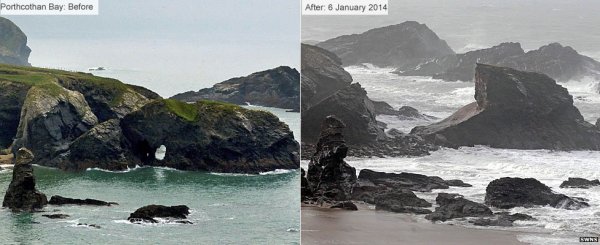
(Storms Reshape Cornwall’s Coastline during Winter of 2013-2014. Image source: AGU)
Under the ongoing insults of human-caused climate change, the North Atlantic is ground zero for the potential development of the worst storms humankind has ever experienced. And indications are that the ramping up to this dangerous time may well be starting now.
The temperature related weather instabilities between the warming North Atlantic, the melting but still frigid ice packs of Greenland, the retreating polar sea ice, a continental North America enduring a series of polar vortex collapse events flushing cold air south as the Arctic experiences its warmest readings in an age, and an interior Europe and Asia that are also experiencing mass migrations of cold air fleeing the ever-warmer Arctic are just screaming.
A bite of warm air and related warm ocean water has flooded a large region between Scandinavia, Svalbard and Novaya Zemlya, making its home where winter sea ice once resided. The waters near Greenland are now melt-cooled by the 500 gigatons of average annual glacial outflow occurring there. And the never-ending influx and concentration of heat in the Arctic has set the Jet Stream into a fit of wild loops and whirls.
All these changes result in a high degree of weather instability, in a setting off of extreme weather events, of great switches from cool, to extreme hot, from record drought to record deluge. In the past few years we’ve seen these kinds of extreme weather events occur with increasing frequency. But now, a new kind of extreme event is beginning to emerge, a kind of event that may well be prelude to ‘The Storms of My Grandchildren’ Dr James Hansen alluded to in his prescient book examining the ultimate consequences of an ongoing and devastating human greenhouse gas emission.
The Breeder of Storms: Our Warming-Ravaged North Atlantic
Ever since winter began to settle in, and the extreme effects of Northern Hemisphere temperature imbalance and Jet Stream changes began to take hold, the North Atlantic has become a breeder of extraordinarily powerful storms. According to reports from NOAA’s Ocean Prediction Center, the month of December alone featured 14 instances of hurricane wind events, 10 storms that experienced rapid intensification, and 5 storms that featured pressures of 950 mb or lower.
For comparison, a tropical storm that hits 950 mb is usually a category 5 hurricane. And for any ocean basin to show 14 instances of hurricane force winds let alone 5 950 mb and below storms over a one month period is extraordinary indeed. Imagine if the south Atlantic generated 10 hurricanes 5 of which were cat 5 in just one month and then you get a general comparison.
Two of these storms were particularly intense with one reaching 940 mb and another deepening to an exceptionally low 929 mb (the lowest reading ever recorded for the North Atlantic was 916 mb). By comparison, the freakish monster that was Hurricane Sandy bottomed out at 940 mb.
It is worth noting that the storms of the North Atlantic typically spread their energy out over larger areas than a tropical system. So though pressures are low enough to be comparible with the most intense tropical storms, the winds generated typically ranged from 75 to 100 mph while extending outward over hundreds of miles. By comparison, a typical tropical cyclone would have a very intense wind field within 20 to 100 miles of its center with intensity rapidly falling off beyond this zone.
Overall, the North Atlantic sees very few storms of 940 mb or lower, usually at the average rate of less than one every year. So for two to occur in the same month is exceptional indeed.
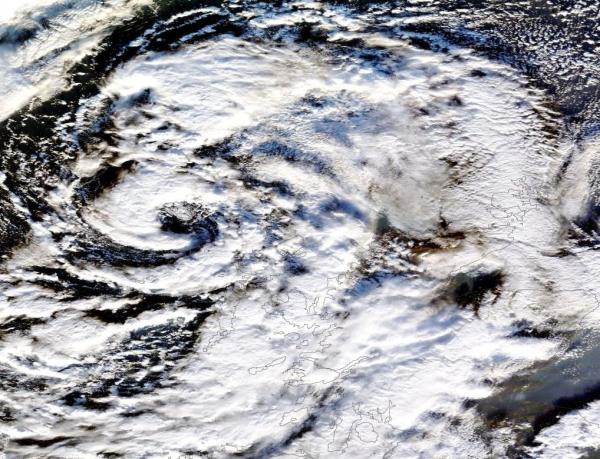
(929 mb low rakes England with hurricane force winds on Christmas Eve, 2013. Image source: Lance-Modis.)
January also featured an almost endless cavalcade of intense storms rushing across the North Atlantic with numerous lows bottoming out below 950 mb (NOAA will issue a final tally sometime in February).
Meanwhile, powerful storms developing in the North Atlantic continually pummeled Europe throughout most of the winter of 2012-2013 resulting in some of the worst rain and snowfall events ever recorded.
This recent climate-change driven shift of the North Atlantic into an increasingly stormy weather pattern may well be a prelude to even more extreme changes to come. Weather models produced by GISS and examined by premier climate scientist James Hansen indicate that very powerful storms arise in conjunction with increasing Greenland melt. Large pulses of fresh, cold water entering the North Atlantic were observed to create climate instabilities that resulted in very powerful storms with frontal systems the size of continents that packed the punch of hurricanes in the physical model runs. It was the likelihood that such storms could emerge by or before mid-century that, in part, spurred Dr. Hansen to write his prescient book — The Storms of My Grandchildren.
As noted above, the current Greenland melt outflow averages about 500 gigatons each year. This outflow is already large enough to weaken the Gulf Stream and set off severe weather instabilities. But with Arctic warming continuing to amplify and Jet Stream patterns bringing more and more warm air over Greenland, melt rates may triple or more over the coming decades, resulting in even more severe weather consequences. So the extreme storm patterns we see emerging in the North Atlantic now are likely just a minor prelude when compared to what we will witness as the years and decades progress.
England in the Firing Line: Windiest December Precedes Wettest January
Currently in the direct firing line of these powerful storms are the main islands of the United Kingdom. Throughout December, England suffered an almost constant assault of storms. In total, five storms, or more than one storm per week brought excessive rains and wind gusts in excess of hurricane force to the British Isles. The results were tens of thousands of power outages, major waves and storm surge events along the coastline resulting in damage to coastal structures and persons being swept out to sea, and increasing instances of flooding over saturated ground.
On record, December 2014 was one of the stormiest ever seen for the British Isles. According to weather data, the month was the windiest since record keeping began in 1969:
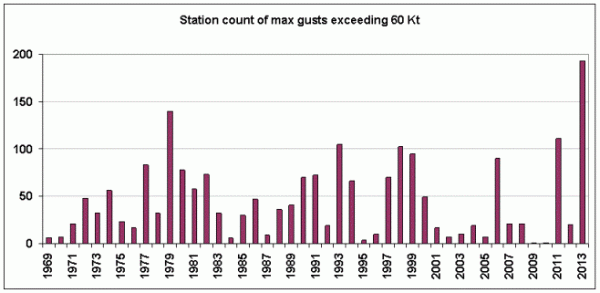
(Image source: UK Met Office)
In addition, December also ranked one of the rainiest with many locations seeing 3 times the normal level of rainfall for the month.
As the new year began, the series of severe storms impacting the UK continued unabated through late January. And as of the 28th, South England had experienced its wettest month since record keeping began in 1910. With a month and a half still remaining Southeast England had already experienced its 6th wettest winter season on record.
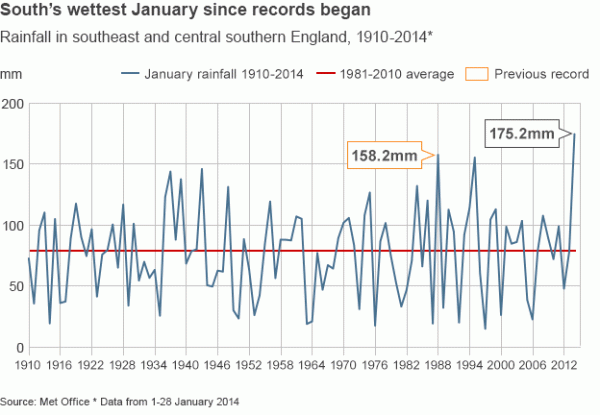
(Southeast UK Rainfall from 1910 to present with 2010 easily setting a new record. Image source: Met Office)
Dr Richard Dixon, director of FES Scotland when commenting in a Guardian interview about the most recent spate of anomalous UK weather noted:
“November and December were record breakers in Scotland, with storm after storm hitting around Christmas. Climate change is bringing chaos to our weather, not just increasing global temperatures but affecting ocean currents and global air currents. Scotland is caught between the changing influences of disappearing Arctic ice, the shifting jet stream and a weakening Gulf Stream. It is no wonder our weather is becoming less and less predictable. The consequences for us are more extreme weather, including more flooding.”Very Dangerous Flood Situation for Southeast England: Powerful Storm on the Way
The extreme rainfall, as of today, had resulted in a major flood event for Southeast England focusing on the Midlands and Somerset. The event inundated croplands, homes and farms throughout the rural region and spurred England to put its military on standby as forecasts show more rain and high winds are on the way. The anomalous event also spurred the 15th meeting of COBRA, the UK’s emergency response committee which has, increasingly, been called due to a continuous barrage of weather emergencies.
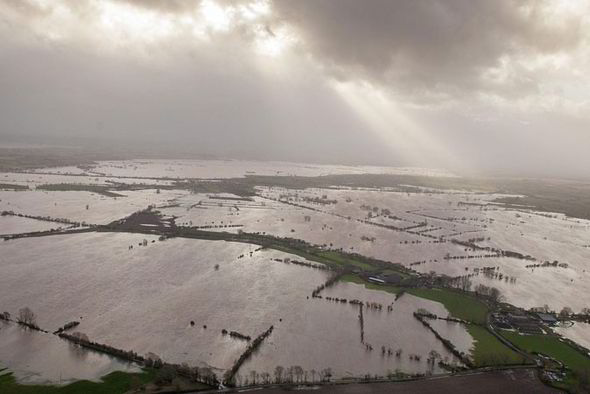
(Aerial photo showing homes, businesses and a vast area of land flooded in Somerset, England. Image Source: David Hedges)
In addition to the clearly visible inundation, numerous villages in the region have been cut off due to flooded roads for more than a week (with some areas being cut off for a month). The constant barrage of storms has resulted in both persistently high tides and almost continuous rainfall. The rainfall, trapped by high sea water, has nowhere to escape and simply pools, continuing to build up in the low-lying lands.
The UK’s conservative government’s response to the situation, thus far, has been anemic, waiting until today to declare the region a disaster area.
Unfortunately, another powerful storm is predicted to arrive by Saturday bringing with it yet one more spate of strong winds, heavy surf and driving rainfall to the already soaked region.
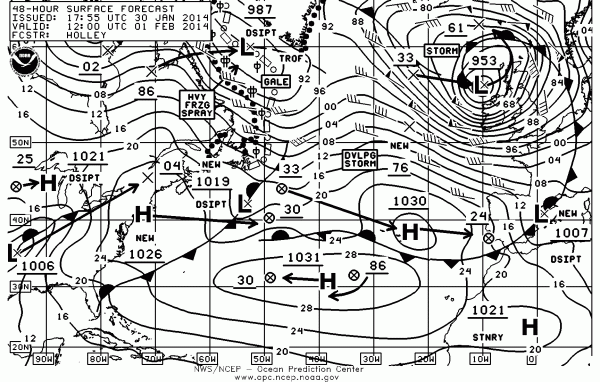
(NOAA forecast map for Saturday. Note a powerful 953 mb storm forecast to impact the UK with 70+ mph winds and heavy rainfall. Image source: NOAA’s Ocean Prediction Center)
So if you’re living in Southeast England please do your best to remain safe, to heed government warnings, and to urge your government officials to provide you with the level of response you deserve during this dangerous time (including policy changes to reduce the rapidly increasing degree of harm coming from human caused climate change).
Early Storms Minor by Comparison
It is worth noting that, though more intense than we’re used to, these storms are the early, weaker outliers of a very dangerous period that is to follow. Our best models and our best climate scientists report the likelihood of far more dangerous storms emerging from this region and from the set of conditions that includes a weakening Gulf Stream, a melting Greenland, an amped up hydrological cycle and rapidly warming zones first at the northern polar region and then in the tropics. The eventual size of these storms could expand to cover continents and involve multiple linked and powerful storm centers. As noted above, Hansen warned of frontal storms large enough to blanket continents and with areas of hurricane strength winds stretching thousands of miles. We haven’t seen anything like that yet. And so the freakish and extraordinary weather we’ve witnessed this winter, and in recent years, is merely prologue for worse events to follow.
Links:
AGU
NASA: Lance-Modis
NOAA’s Ocean Prediction Center
UK Met Office: Winter Storms December 2013 to January 2014
Parts of England See Wettest January Since Records Began
UK Floods: January Rain Breaks Records in Parts of England
Colorado Bob’s Climate Feed
The Storms of My Grandchildren
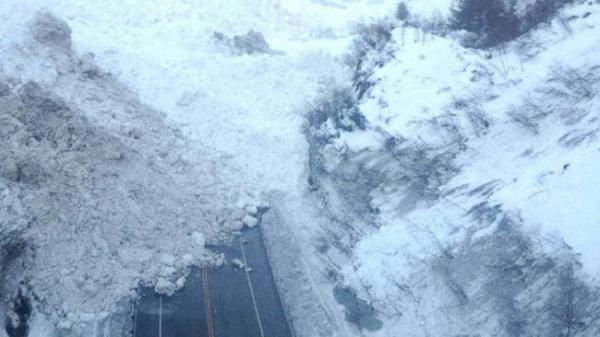
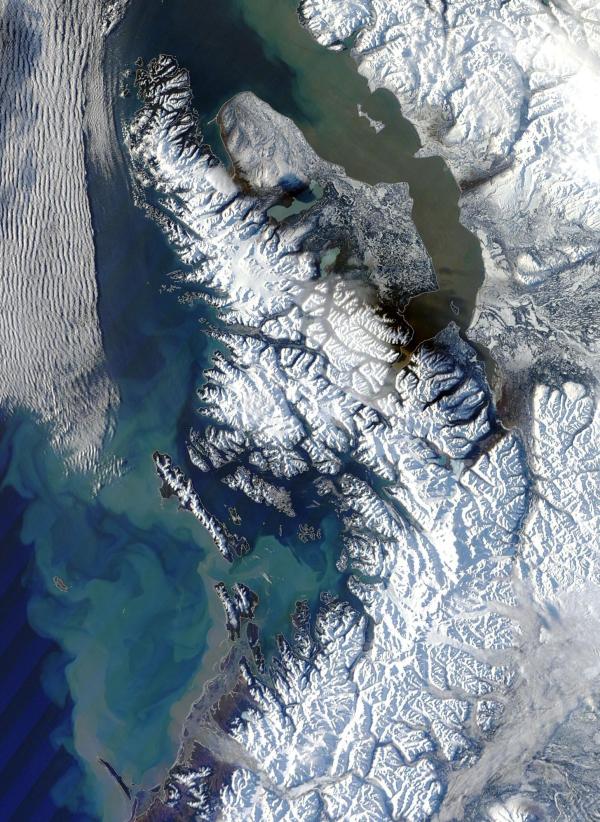
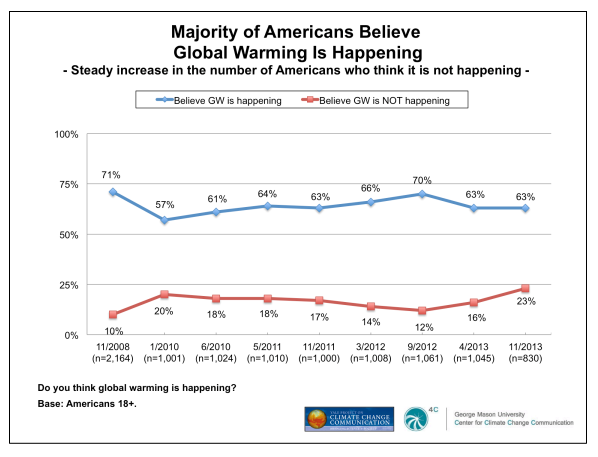

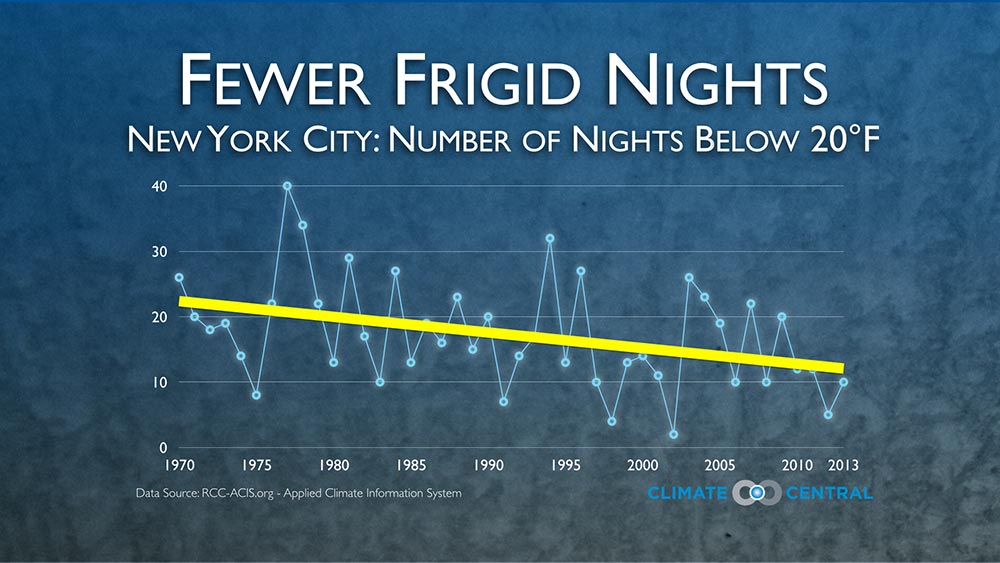
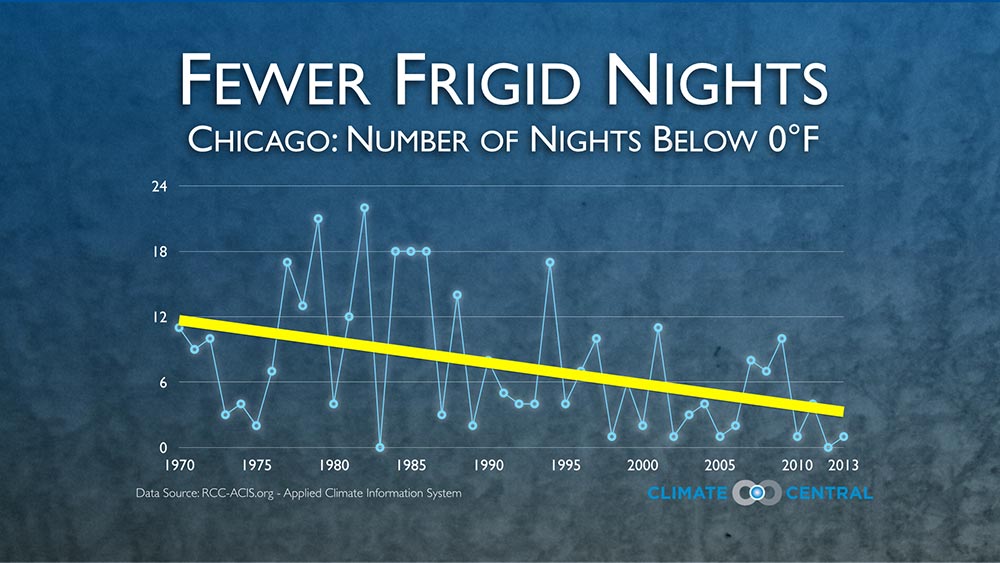
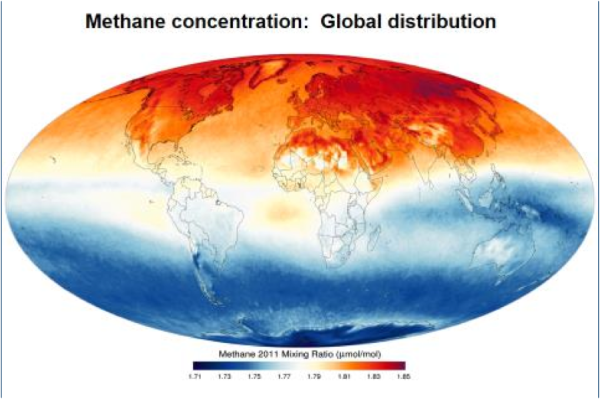

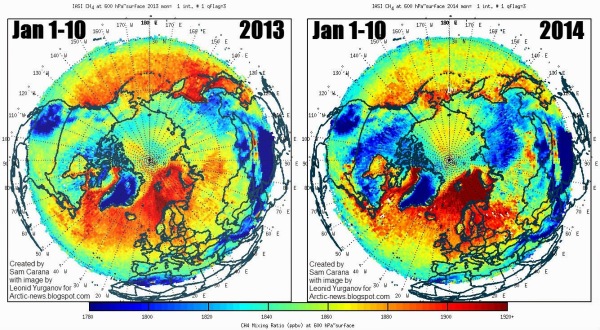
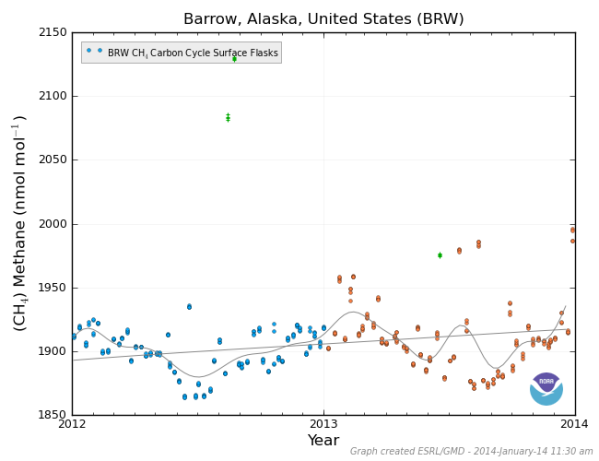
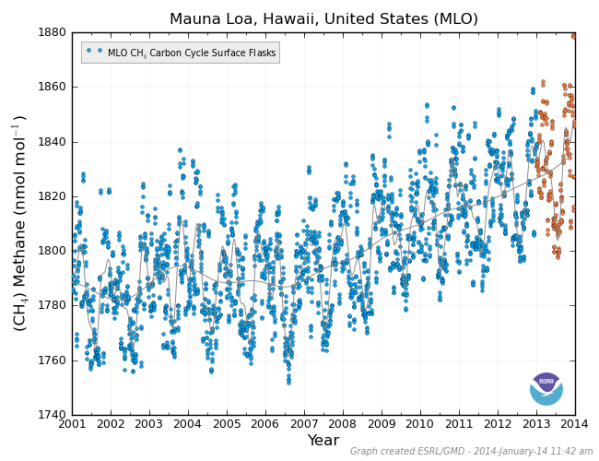
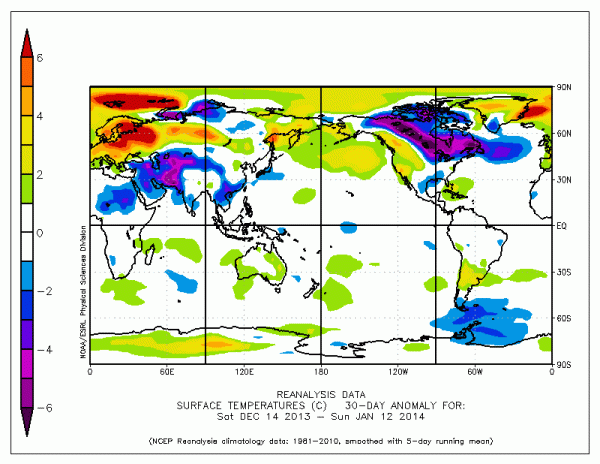

 128
128  43
43 


